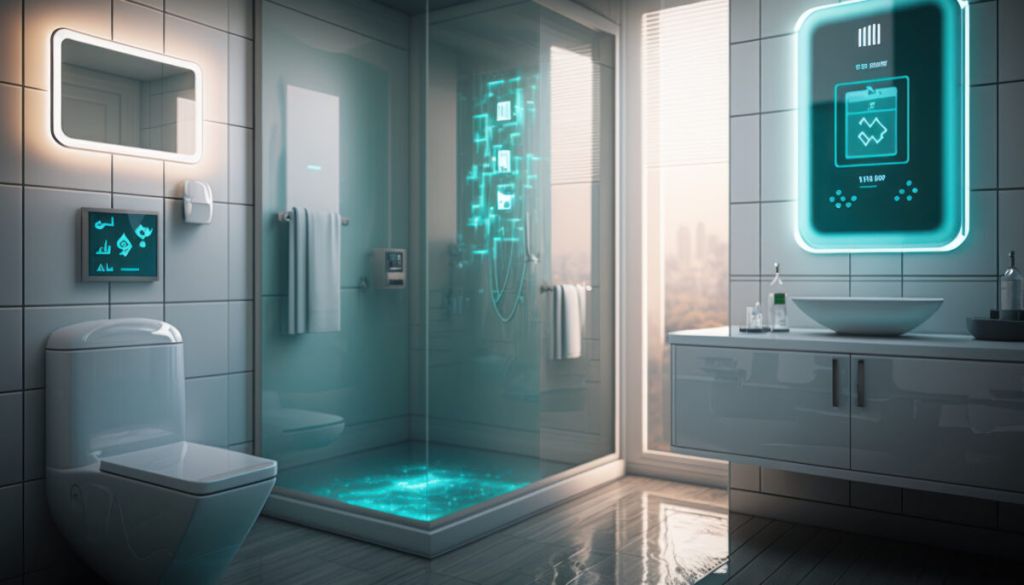
Water-efficient Toilets for Urban Homes: A Smart Choice?
Share
In today's rapidly urbanizing world, the need for sustainable solutions has never been more pressing. Among the many innovations capturing the attention of tech professionals and enthusiasts alike, water-efficient toilets for urban homes stand out as a pivotal development in modern plumbing. These toilets not only promise a reduction in water consumption but also align with the broader goals of smart city initiatives and eco-friendly living.
As cities expand and populations grow, the strain on water resources intensifies. Therefore, integrating water-saving technologies into our daily lives is not just a choice; it's a necessity. This article delves into the intricacies of water-efficient toilets and their implications for urban homes.

Why Water-efficient Toilets Matter
Water-efficient toilets are designed to use significantly less water per flush compared to traditional models. The conventional toilets typically use about 1.6 to 3.5 gallons per flush, whereas water-efficient models can use as little as 1.28 gallons. This reduction in water usage can lead to substantial savings on water bills and a decrease in the overall environmental impact.
Beyond the financial benefits, these toilets contribute to the conservation of vital water resources. By minimizing the water wasted with each flush, they play a crucial role in sustainable urban living. This is particularly important in areas prone to droughts or where water scarcity is a constant concern.
The Technology Behind Water-efficient Toilets
Modern water-efficient toilets incorporate advanced technologies to ensure optimal performance without compromising on functionality. Dual-flush systems, pressure-assisted flushing, and gravity-fed systems are just a few of the innovations that make these toilets more effective.
Dual-flush toilets, for example, offer two flush options: a full flush for solid waste and a reduced flush for liquid waste. This flexibility allows users to conserve water based on their needs. Pressure-assisted toilets, on the other hand, use compressed air to enhance the flushing power, thus using less water while maintaining efficiency.
The Smart Home Integration
For tech enthusiasts, the integration of smart technology into water-efficient toilets adds an additional layer of appeal. These smart toilets come equipped with sensors, automatic flushing systems, and even connectivity to home automation systems. The ability to monitor water usage through apps and receive maintenance alerts ensures that homeowners can manage their resources more effectively.
Moreover, the smart features offer an enhanced user experience, with amenities such as heated seats, personalized settings, and even voice-activated controls. This fusion of technology and sustainability makes water-efficient toilets a must-have for the modern urban home.
Choosing the Right Water-efficient Toilet
When selecting a water-efficient toilet, it's important to consider several factors, including the design, flushing technology, and additional features. Homeowners should also assess their specific water-saving goals and budget constraints.
For those interested in exploring different options, check out this comprehensive guide on composting and water-saving toilets to find the best fit for your home.
Impact on Urban Infrastructure
The widespread adoption of water-efficient toilets can have significant implications for urban infrastructure. By reducing the strain on municipal water systems, these toilets can help cities manage their resources more effectively. This is particularly relevant in densely populated areas where water demand is high.
Additionally, the reduction in water usage can lead to decreased energy consumption for water treatment and transportation, further contributing to the sustainability of urban environments. To understand more about how these toilets can help prevent leaks and save resources, visit this insightful article on preventing leaks.
Challenges and Considerations
Despite their numerous benefits, water-efficient toilets are not without challenges. Some models may require specific maintenance to ensure optimal performance. Additionally, the initial cost of installation can be higher than traditional toilets, although the long-term savings often offset this expense.
Homeowners should also stay informed about the latest technologies and advancements in water-efficient solutions. For a deep dive into smart water-saving gadgets and their role in enhancing bathroom efficiency, explore this article on smart gadgets.
Conclusion
As urbanization continues to shape the future of our cities, embracing water-efficient technologies becomes crucial. Water-efficient toilets for urban homes offer a practical and sustainable solution that aligns with the goals of both tech professionals and eco-conscious homeowners. By reducing water consumption and integrating smart features, these toilets not only enhance the convenience of modern living but also contribute to a more sustainable future.
For further insights into the benefits of water-efficient toilets, consider reading this informative piece on EPA's WaterSense program.

FAQs
1. How much water can I save with a water-efficient toilet?
Water-efficient toilets can save up to 13,000 gallons of water per year compared to traditional models, depending on the household's usage patterns.
2. Are water-efficient toilets more expensive?
While the initial cost may be higher, the long-term savings on water bills often justify the investment. Additionally, many regions offer rebates for installing water-efficient fixtures.
3. Can I integrate a water-efficient toilet into my smart home system?
Yes, many modern water-efficient toilets are equipped with smart features that allow integration with home automation systems, offering enhanced convenience and control.
This article contains affiliate links. We may earn a commission at no extra cost to you.
